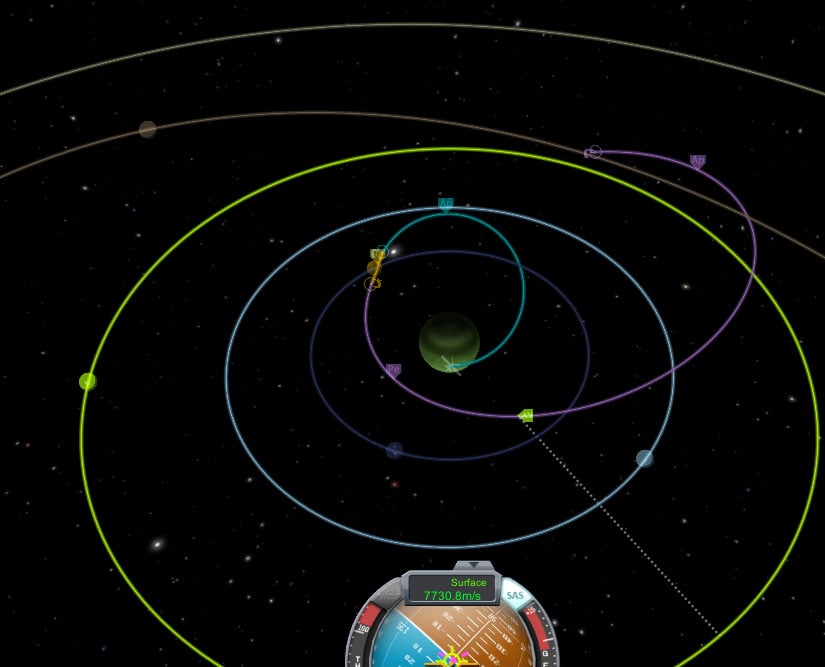P
peceecar
Guest
Hello, I'm working on a Kerbal space program inspired project and I've pretty much got most of the mechanics done but since my math knowledge is limited (especially geometry) I'm having trouble writing the draw code for the following:
I have a ship object (obj_player) and would like to draw a line/ orbit/ vector on the screen that shows the future movement of the object, similar to the one shown on the picture from kerbal space program (the blue curve with the AP tag above it or the purple one). The curve would have to be able to shift and adjust depending on how much thrust the player gives the ship. The gravity mechanics of the player around the planet, docking, lift off physics are all done. But I have no idea how to even begin coding this part. Does anyone have any ideas or some helpful tutorials?
The game is in 2D btw, so there's no need to calculate a z axis, just x,y points where to draw the curve.
Thank you

I have a ship object (obj_player) and would like to draw a line/ orbit/ vector on the screen that shows the future movement of the object, similar to the one shown on the picture from kerbal space program (the blue curve with the AP tag above it or the purple one). The curve would have to be able to shift and adjust depending on how much thrust the player gives the ship. The gravity mechanics of the player around the planet, docking, lift off physics are all done. But I have no idea how to even begin coding this part. Does anyone have any ideas or some helpful tutorials?
The game is in 2D btw, so there's no need to calculate a z axis, just x,y points where to draw the curve.
Thank you



